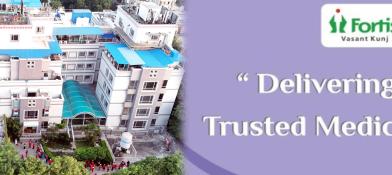Lumbar Puncture (Spinal Tap)
Overview
Lumbar puncture (LP) is a diagnostic test for certain brain disorders. It is also called a spinal tap. It involves withdrawing cerebrospinal fluid (CSF) in the brain. CSF is a fluid in the brain and spinal cord. Brain disorders include infections, haemorrhages, and other neurological disorders. LP is a gold standard procedure to detect various brain lesions, pressure in the cranium, and the effects of medications.
LP is a minimally invasive, image-guided technique for drawing CSF. CSF is an essential fluid in the brain and spinal cord that cushions them against shock and maintains constant pressure in the skull. It offers nutrients to the brain and spinal cord tissues and carries waste products away from them.
Indications
LP is ordered for both diagnostic and therapeutic reasons. It helps collect CSF and can be used to diagnose certain diseases. It is used to diagnose bacterial, viral, and fungal infections like encephalitis and meningitis, inflammatory disorders like multiple sclerosis and Guillain-Barre syndrome, some autoimmune neurological disorders, some cancer-related disorders of the brain and spinal cord, metabolic disorders of the brain, bleeding around the brain called subarachnoid haemorrhages.
- It is also done to administer medications such as analgesics, chemotherapeutic agents, and antibiotics.
- It is also used to measure the pressure in CSF.
- It is also used to inject dye or radioactive substances for making diagnostic images of the CSF.
Contraindications
There are certain conditions where LP cannot be used. Any infection on or near the area of the LP site, any tumour in the brain that causes immense pressure on the brain and spinal cord. It must also be indicated when platelet counts are less than 20000 mm3. Use of certain medications like blood thinners within 24 hours is contraindicated for LP. Certain bleeding disorders like haemophilia and Von Willebrand diseases and trauma to the vertebrae in the lumbar area are contraindications for LP.
Before the Procedure
LP can be done in an outpatient setup or a hospital. One might have to get a head computed tomography (CT scan) to rule out any raised intracranial pressure. Blood tests might be advised to understand the present physical condition and to rule out the presence of any infections. Sometimes, medications like blood thinners have to be stopped, or their timing be postponed avoiding excess bleeding during the procedure. LP is done on an empty stomach. Hence, it is better to refrain from eating or drinking at least 8-10 hours before the procedure.
An individual undergoing LP is assessed for any contraindications, risks, and clinical signs. An individual is made to lie to a side with knees drawn to the chest area like a foetal position or folding like a cat. This position flexes the back and widens the space between the vertebrae for the needle to be inserted.
During the Procedure
The healthcare professional uses local anaesthesia to numb the lower back. The puncture site is cleaned with the help of an antiseptic solution, and a thin hollow needle is carefully inserted between vertebrae. The needle insertion is usually in the lower back typically between the third and fourth lumbar vertebrae above the buttocks. The needle passes without any resistance through the spinal membrane into the canal. One might have to bend for the needle to pass without any resistance. CSF is drawn once the needle reaches the canal, and the pressure is measured using other tools. Once enough fluid is collected, the needle is removed, and the puncture portion is covered with a bandage. The entire LP procedure takes about 45 minutes. Occasionally, ultrasound-guided needle insertion may be done.
After the Procedure
An individual is advised to lie down for some time or at least an hour. Instructions will be given not to participate in strenuous activities like physical exercise or contact sports immediately after the procedure. The Individual is advised to refrain from operating heavy machinery or driving for 24 hours. Painkiller medications will be prescribed for pain. Fluids should be taken to keep oneself hydrated.
Test Interpretation
The collected CSF will be analysed in the lab for factors like general appearance. The colour and clarity of the CSF will be examined. Protein levels in the CSF will be discussed as increased protein in CSF indicates the presence of infection or inflammation. Altered levels of white blood cells and glucose levels indicate infection or tumour. CSF will be analysed for microorganisms like bacteria, fungi, or viruses. Any abnormal cells will also be examined. Based on the lab findings and clinical examination, healthcare professionals give a diagnosis.
Risks and Complications
LP is a safe procedure but is associated with some risks and complications. These include headaches due to fluid leakage into the surrounding tissues. This happens many hours after the procedure and may continue for one or two days. This is associated with nausea, vomiting, and dizziness. Mild pain or tenderness may occur after the procedure radiating to the legs. Bleeding at the site or sometimes into the epidural space also occurs.
Another rare complication is called the brainstem herniation. This occurs due to pressure release after removing some fluid when there is a tumour or other lesion in the brain. This can be avoided by getting a CT scan before the procedure. Hematomas are other complications that can cause back pain and other neurological complications.
Conclusion
A lumbar puncture is a diagnostic test done by a healthcare professional to withdraw a small amount of CSF from the body. Laboratory examination of CSF collected by LP helps identify various brain disorders and lesions. It is a safe and a gold standard test for diagnosing brain abnormalities.





























